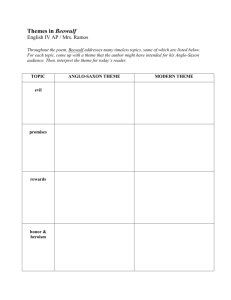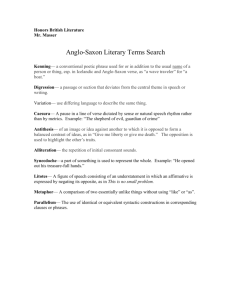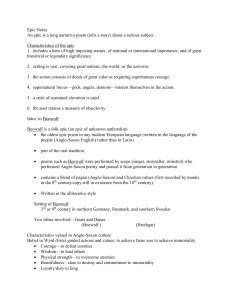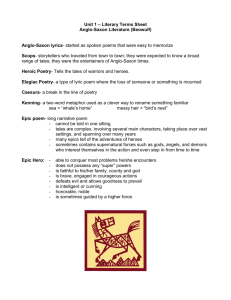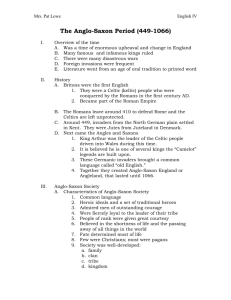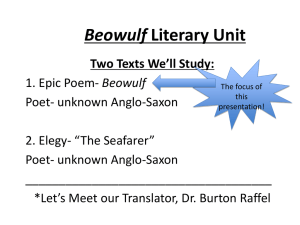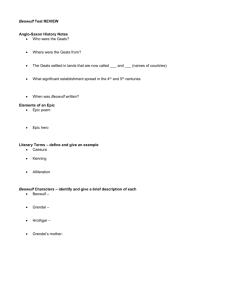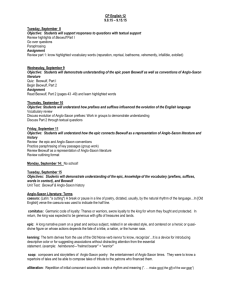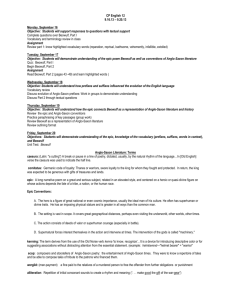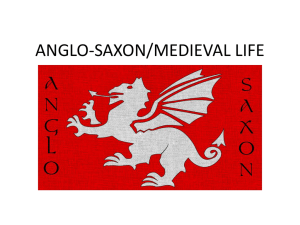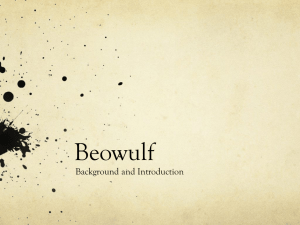Anglo-Saxon/Beowulf Unit Test Review
advertisement
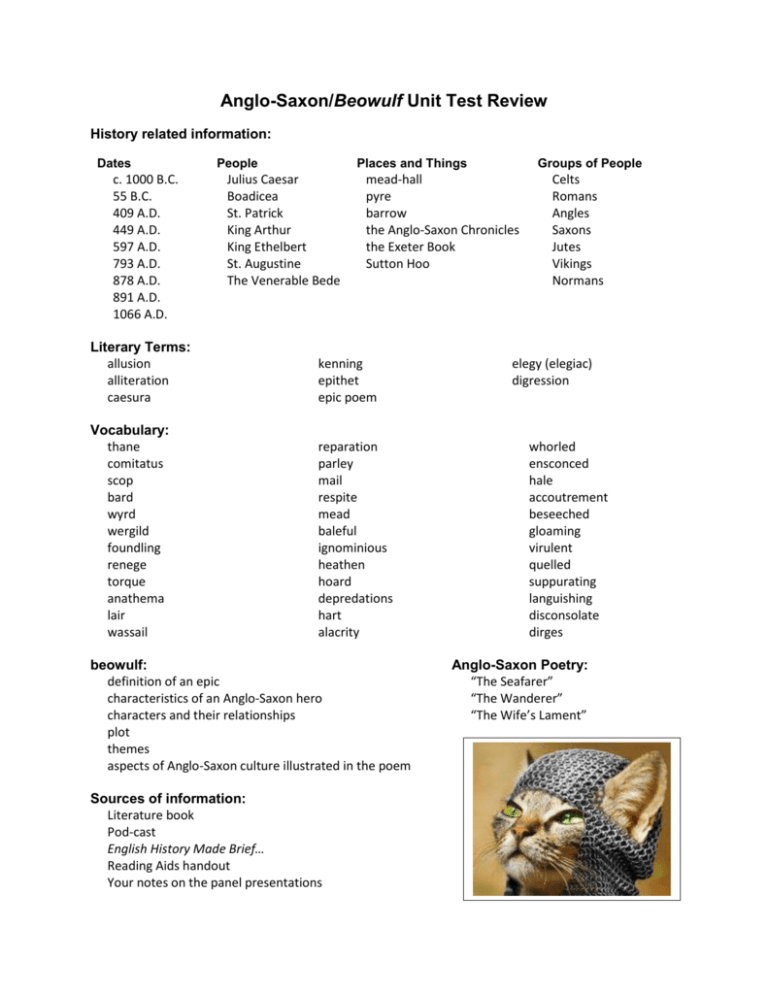
Anglo-Saxon/Beowulf Unit Test Review History related information: Dates c. 1000 B.C. 55 B.C. 409 A.D. 449 A.D. 597 A.D. 793 A.D. 878 A.D. 891 A.D. 1066 A.D. People Places and Things Julius Caesar Boadicea St. Patrick King Arthur King Ethelbert St. Augustine The Venerable Bede Literary Terms: allusion alliteration caesura kenning epithet epic poem Vocabulary: thane comitatus scop bard wyrd wergild foundling renege torque anathema lair wassail reparation parley mail respite mead baleful ignominious heathen hoard depredations hart alacrity beowulf: definition of an epic characteristics of an Anglo-Saxon hero characters and their relationships plot themes aspects of Anglo-Saxon culture illustrated in the poem Sources of information: Literature book Pod-cast English History Made Brief… Reading Aids handout Your notes on the panel presentations Groups of People mead-hall pyre barrow the Anglo-Saxon Chronicles the Exeter Book Sutton Hoo Celts Romans Angles Saxons Jutes Vikings Normans elegy (elegiac) digression whorled ensconced hale accoutrement beseeched gloaming virulent quelled suppurating languishing disconsolate dirges Anglo-Saxon Poetry: “The Seafarer” “The Wanderer” “The Wife’s Lament”

